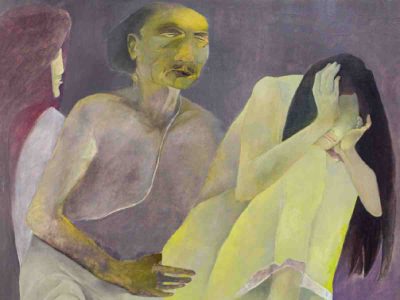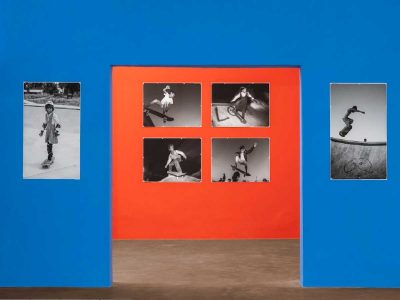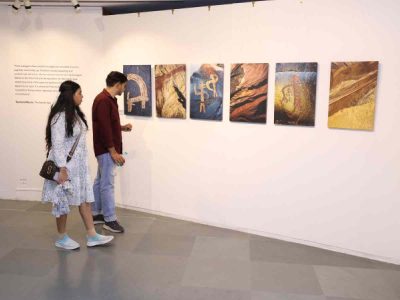After a hiatus, renowned lifestyle designer Raseel Gujral Ansal, Creative Director of Casa Pop, has launched ‘Inscape’, an artistic collection of wallpapers that reimagines historical narratives through a contemporary lens. This marks a significant reinvention for Casa Pop, her diffusion line known for its colourful, eclectic, and quirky homeware.
Raseel’s fascination with wallpapers is no secret.
“They possess the power to transform a space with effortless ease,” she enthuses.
“The immediacy with which they can refresh and energise is something I find truly captivating, and it fuels my constant experimentation.”
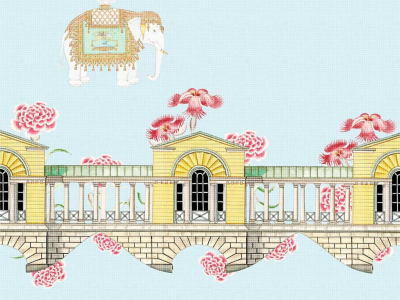
Inscape reflects this passion, delving into the rich tapestry of Indian culture and reimagining historical constructs to represent the confluence of influences shaping contemporary India’s vibrant landscape.
Described as “layered, fantastical, and lucid”, Inscape wallpapers are a visual feast for the senses. Drawing inspiration from the Mughal, British, and Indian royal eras, they evoke a sense of nostalgia and wonder. Raseel meticulously chose three mediums — gauze, lustre-silver (metallic), and shantung (silk ribbed) — to interpret the designs, ensuring both luxury and subtlety.
“For me, wallpapers are an art replacement,” she explains.
“It’s a way to democratise art and make it accessible to a wider audience. In that sense, there’s no room for overpowering patterns, because the artwork takes centre-stage. My aim is to offer people wallpapers that are special, luxurious, yet understated.”
A legacy of design
Raseel carries a deep-rooted creative lineage, being the daughter of legendary artist and architect Satish Gujral. Her design journey began at the tender age of 9, with a self-directed bedroom redesign. At 21, she joined her father’s firm, quickly immersing herself in the world of architecture and design. In 1993, she established Casa Paradox, a furniture studio infused with her artistic DNA. In 2013, Casa Pop emerged as a platform for playful design exploration. However, the isolation experienced during the pandemic led to the conception of Inscape, marking a pivotal shift in Casa Pop’s identity.
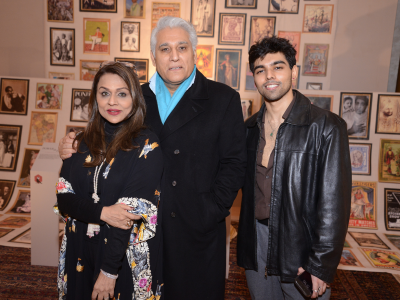
Joined by her son, Imaan Ansal, Raseel has reimagined Casa Pop as an “artistic living brand” that explores the Indian identity through a fresh lens. Imaan describes the collection as “fond nostalgia interlaced with loneliness”, reflecting the introspective nature of the pandemic era. He sees it as a romanticisation of that loneliness, adding a unique layer to the collection’s narrative. Born during the first Covid lockdown,
Inscape represents an “internal escape”, a journey into Raseel’s mind during a time of stillness and self-reflection. The collection draws upon motifs from the Indian subcontinent’s past, celebrating its inclusivity and adaptability. It also re-appropriates cultural motifs often used to stereotype the Indian identity, challenging viewers to perceive them in a new light.
A family affair
Raseel’s husband, Navin, has been a constant source of support throughout her journey.
Recognising her artistic inheritance from her father, he says, “Raseel has so much of her father’s artistic temperament. She is instinctive, spontaneous, and characteristically creative in everything she does.”
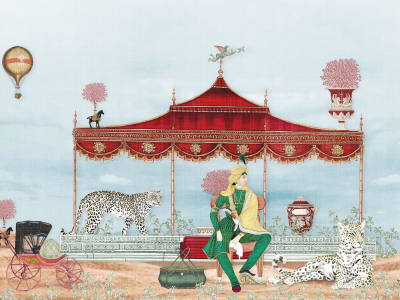
He, along with Imaan, plays a crucial role in supporting Raseel’s creative vision.
With Inscape, Casa Pop embarks on a new chapter, embracing its role as a platform that explores the Indian identity through the intersection of art and design. Raseel and Imaan’s creative collaboration promises exciting possibilities for the brand’s future.
This collection transcends mere aesthetics; it’s an invitation to delve into the depths of history, culture, and personal narratives, transforming living spaces into vibrant expressions of self.


